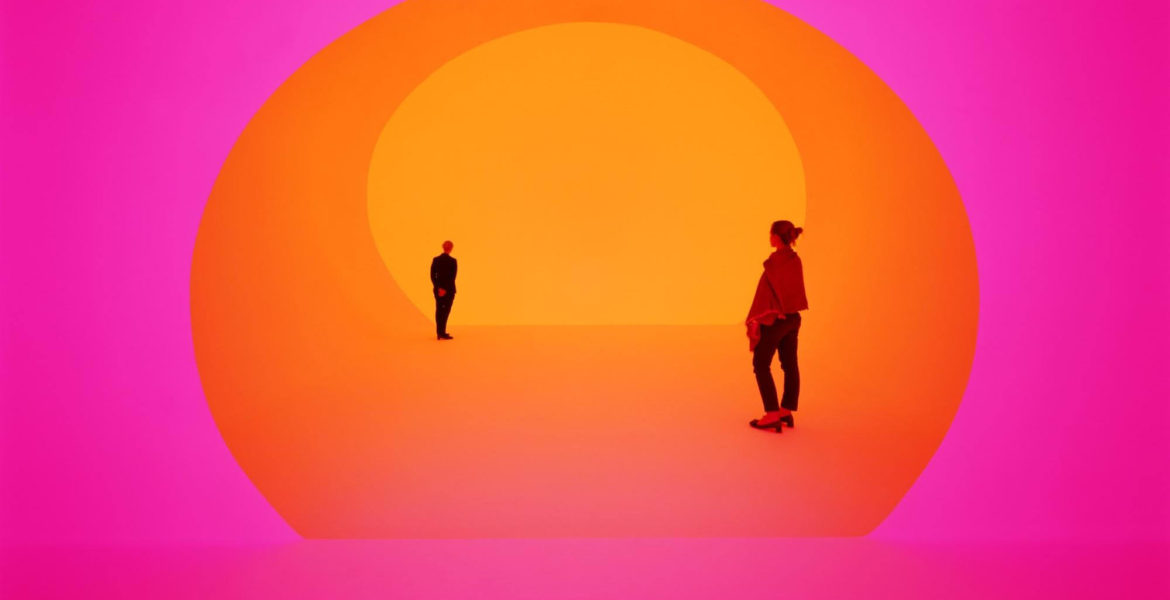The Light and Space Movement uses mediums such as light, glass and neon to create large immersive installations filled with geometric abstractions. The pieces capitalize on the power of sensation and perception, and how to create an aesthetic space devoid of the noise of reality.
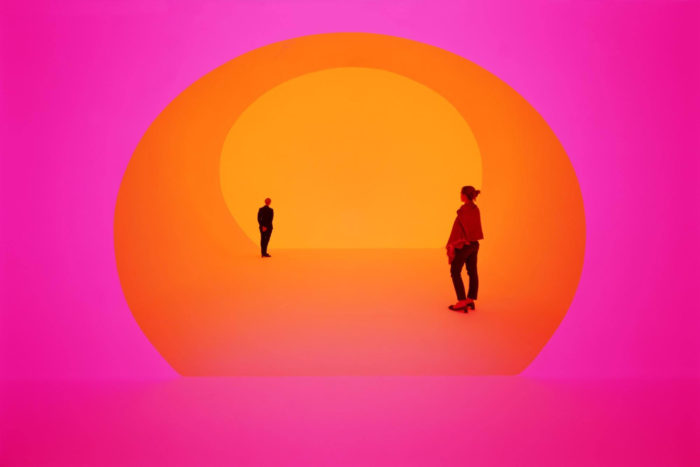
Instead of just teasing the eyes, most installations involve the entire body’s presence inside the space. Artists add a sublime sensory experience through a strategic display of shapes and light –– they use light to create the absence of space or to create illusory dimensions. It is a branch of West Coast minimalism because its creation takes the work of only two materials, space and light, but creates a complexity that captivates its viewers.
Where the Light and Space Movement Began:
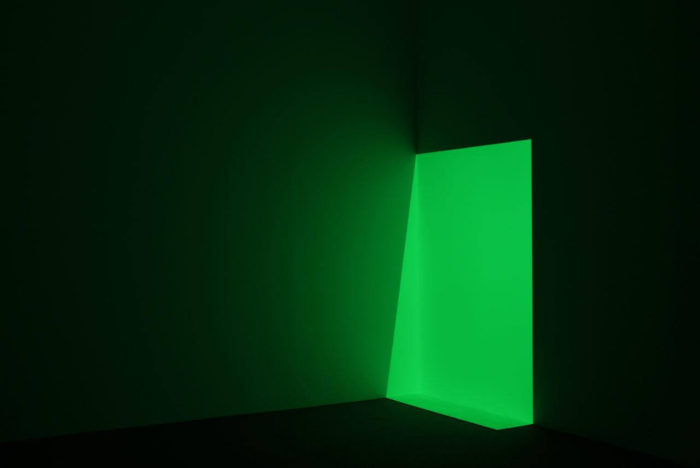
The movement began in California in the 1960s and brought with it a new sense of art and space. The idea arose out of a need to veer from the norm of an often used medium –– paint as used in creating abstract art. Artists behind the movement were intent on reducing art to its purest elements through pieces such as light encasements and optical illusions. The movement’s inception grew during the Cold War’s space race and the age of the atomic bomb. As technology and modernism was stretching its horizons, the Light and Space Movement also transcended art’s influence at the time and offered society an escape from a tumultuous political climate and a differing perspective on the power of technology.
The Movement’s Pioneering Artists and Works:
The movement was spearheaded by pioneering artist, Robert Irwin, who experimented with gestural painting, minimalism and soon installation and sculpture. In the late 1950s, he became involved with the Ferris Gallery, a small circle of artists in Los Angeles intent on nourishing what was an artistic desert. Irwin, with artists Doug Wheeler and James Turrell, grew tired of the limits associated with abstract painting and searched for a new artistic medium. They soon saw their work evolve into the Light and Space Movement. Their goal was to manipulate their viewers’ perceptions of their creations.
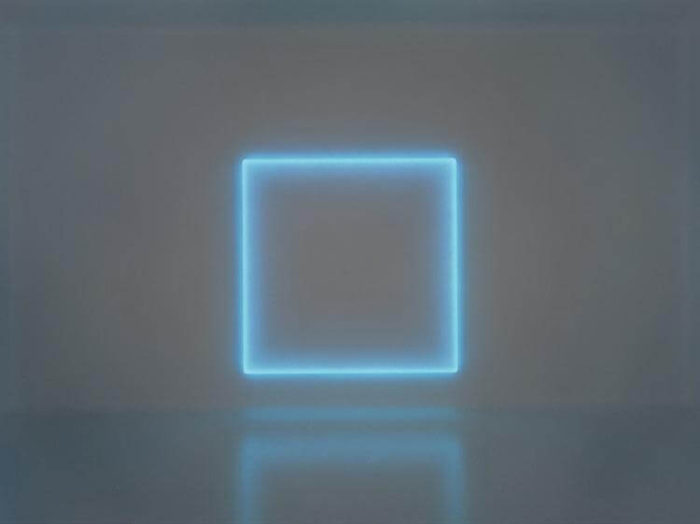
One of Irwin’s earliest pieces, his discs series, comprises convex aluminum discs that appear suspended from the wall they are mounted on – a ball of light glows from the center, giving the discs a transparent glow. He later developed “site-conditioned works,” which involved more immersive experiences rather than just a separate display. In one of his pieces, Fractured Light—Partial Scrim—Eye Level Wire (1970 – 1971), Irwin transformed a dim fluorescent-lit room into a mix of cool and warm-hued lights that gave the space an entirely new character.
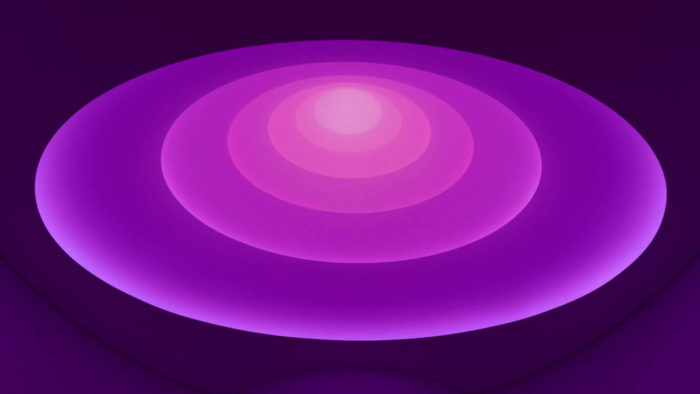
Wheeler and Turrell, cofounders of the movement, also created notable pieces of their own.
Wheeler’s first series, “Encasements,” twisted his viewers perceptions of space and volume. He used fabricated acrylic and neon that give his installations an auric back glow.

Turrell created his first piece, “Afrum-Proto” while he was still a student in the 1960s. It featured a glowing marked the first of several “corner projection pieces.” Turrell projected a light through a template that resulted in an optical illusion –– when seen from a certain angle, the light formed what appeared to be a three dimensional cube. He drew inspiration for his piece during a history class, where he noticed the light cast by the slide projector during lecture.
Roden Crater
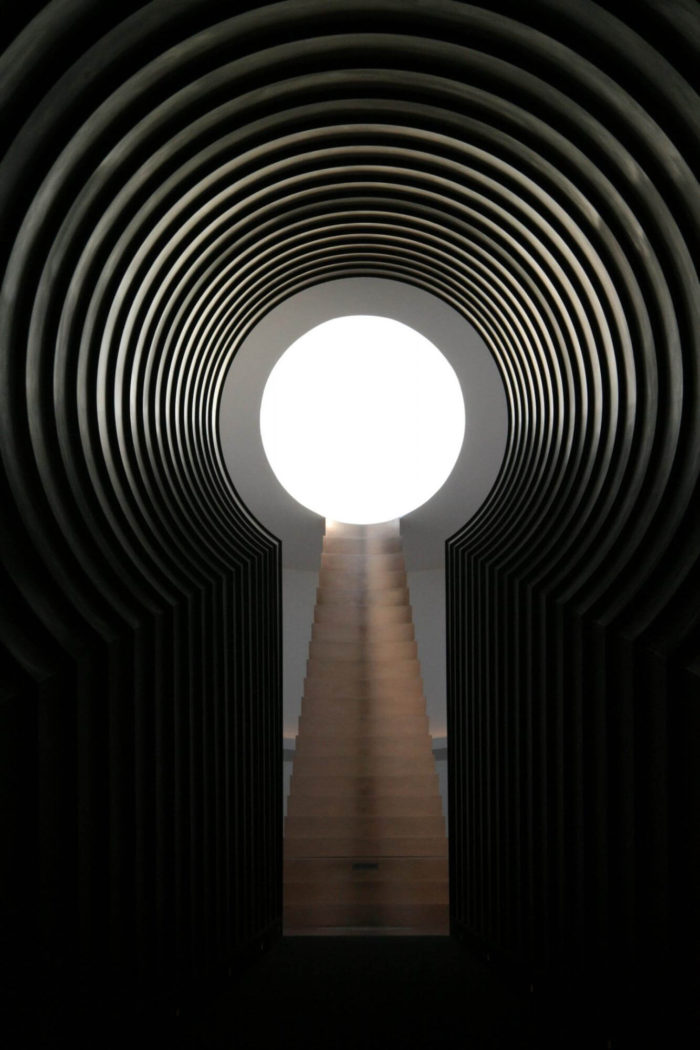
Turrell is also known for his large scale piece, Roden Crater, in the Painted Desert region of Northern Arizona. Turrell transformed the dormant crater into tunnels of multiple proportions that capture the vast sunlight during the day and the light from the stars and planets at night. Each tunnel and walkway was painstakingly engineered to allow viewers to immerse themselves in time’s cycle of light. The Alpha (East) Tunnel is lit by rounded slits of light that guide viewers to a spherical ray of light that changes form and image based on the time of day or night that light is shining through. Constructing Roden Crater is still ongoing, and is not yet open to the public. When completed, however, the project will have six tunnels and twenty one viewing spaces for the public to admire.
Influence on Pop Culture
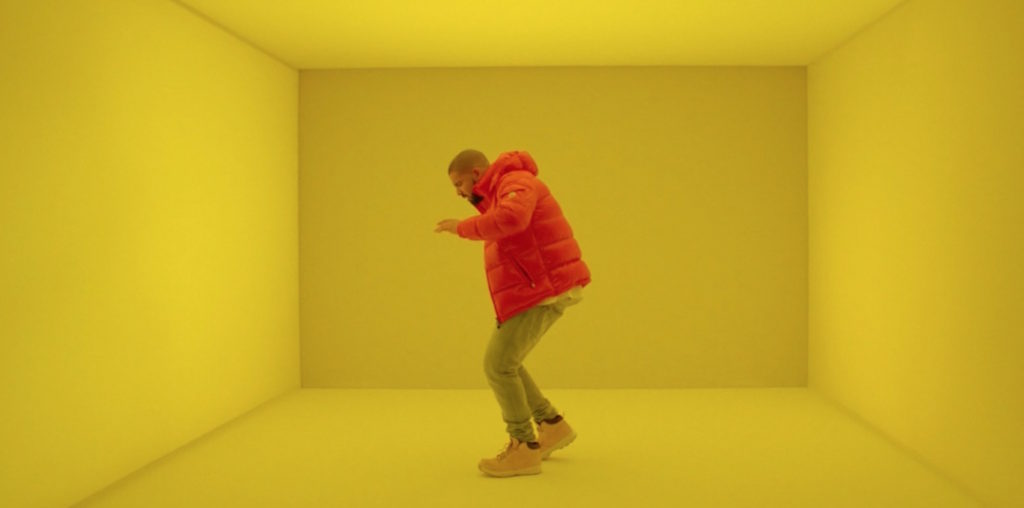 Drake, Hotline Bling Video
Drake, Hotline Bling Video
The popularity of the Light and Space Movement hasn’t stopped at Wheeler and Turrell. Modern pop culture has also been strongly influenced by the movement. The set of Drake’s music video for his song, “Hotline Bling,” has hints of Turell and Irwin’s immersive light installations. Drake dances inside glowing white cubes and other geometric shapes that slowly change color and dimension and cast him and other dancers in a statuesque silhouette. He moves along a staircase seemingly suspended in midair while a red square light glows and beckons above him. While Turrell did not say he was involved in creating Drake’s video, he said he was flattered that Drake turned to his artistic influence for inspiration.

